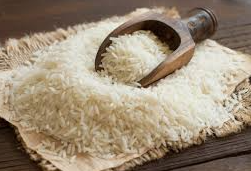India is wrestling with a massive rice surplus after back-to-back bumper harvests have pushed its government stockpiles to record levels. With granaries overflowing, exporters are now under growing pressure to convert this surplus into global demand — but that’s easier said than done.
Why India Has a Rice Glut
- Consecutive years of strong monsoons and high yields have led to production that far exceeds domestic consumption.
- As of April 1, India’s rice stockpiles (including unmilled paddy) hit 63.1 million tonnes — nearly five times the government’s buffer norm of 13.6 million tonnes.
- With such high inventory, buyers are in no hurry to purchase more, creating global pricing pressure.
The Export Challenge
Exporters are now working hard to build supply chains that can deliver high-quality, export-grade rice reliably. One of the most ambitious targets? Cracking open Japan’s tightly guarded rice market. India’s Rice Exporters’ Federation, together with the International Rice Research Institute and APEDA, is testing which Indian rice varieties can replicate the premium rice experience Japan demands. For example, Assam’s aromatic Joha rice was recently showcased as a potential sushi-grade option at a global rice conference.
Global Price Dynamics
- Global rice production is projected to hit a record 543.6 million tonnes in 2024–25.
- But while output is soaring, demand isn’t keeping pace. According to the FAO, total global supply (including stocks) is estimated at 743 million tonnes, well above the forecast global demand of 539.4 million tonnes.
- This imbalance is expected to keep rice prices subdued through 2026 unless something disrupts the market.
How India Is Managing the Oversupply
One of the most creative solutions: diverting a chunk of the surplus rice into ethanol production. The Food Corporation of India (FCI) has earmarked 5.2 million tonnes of rice for ethanol in 2024–25, helping both reduce stockpiles and meet the country’s ethanol-blending goals.
Risks — and Opportunities
Risks:
- Building export-focused supply chains is difficult. Convincing global buyers to rely on Indian rice demands consistent quality, strong logistics, and long-term trust.
- Even with exports rising, global oversupply could continue to weigh on prices.
Opportunities:
- If India cracks premium markets (like Japan), it could significantly improve export value.
- Growing rice-to-ethanol conversion could become a powerful lever, helping India reduce waste, clear its stocks, and fuel its green-energy ambitions.
The Bigger Picture
India’s surplus isn’t just an economic problem — it’s a strategic moment. As the world’s top rice exporter, India now has the opportunity to reshape global rice trade. But success will require more than production capacity: it needs diplomacy, innovation, and a long-term vision for transforming excess into opportunity.





Leave A Comment